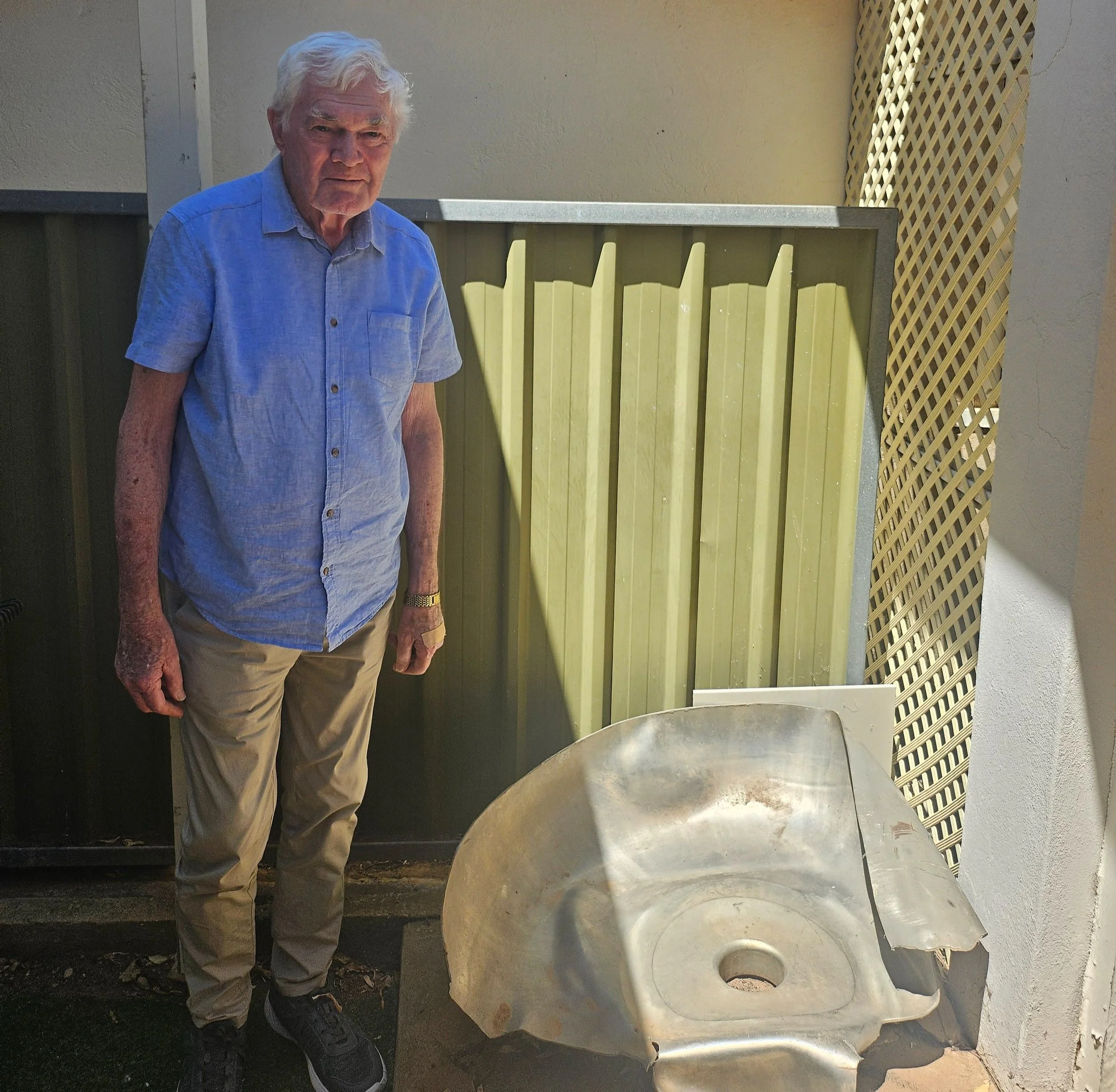The Foundation of Skylab
A 77,000kg space station referred to as Skylab, crash landed on Australian soil, in the Western Australian outback in 1979. Built mostly from unused Saturn and Apollo rocket equipment, Skylab, housed 3 crews over 24 weeks between May 1973 and February 1974 (Harland n.d.). As America’s first experimental space station and the largest to ever be launched, Skylab was built to provide evidence of the capabilities of humans living and working in space for extended periods (NASA n.d.). For this mission in mind, it had to be designed with the ability for long durations, hence its four compartments. The orbital workshop, for working, living and sleeping, the airlock module for spacewalks, the multiple docking adapter for docking and rescue capabilities, and, the Apollo telescope mount, containing four telescopes and four solar arrays (Harland n.d.).
Pictured is Skylab in orbit with Earth in the background, “taken by the Skylab 4 (the last Skylab mission) crew,” (NASA Image and Video Library 2025).
So, what went wrong?
Although being a major step in human spaceflight and providing us with foundation of understanding the impact of humans spending extended periods in space, it wasn’t an easy journey.
Straight off the launch Skylab presented issues, with its critical meteoroid shield and one of only two main solar panels ripping off during lift off on May 14, 1973. Losing this shield meant the station was stripped of any heat protective layer, and with it, debris from the shield jammed the other main solar panels, so the station was only functioning on the secondary solar panels for power. Thinking quickly, ground control deployed the Apollo telescope mount and manoeuvred it’s four secondary panels towards the Sun for more power - but without the heat protective shield, the temperature of the station skyrocketed to a high of 52 degrees Celsius (Uri 2018).
Not functional and not great to be living in.
Skylab was uncrewed at the time of failure, but shortly after, on May 25th, 1973, the first crew was sent up with their focus on repairing the station. Starting with lowing the temperature, the astronauts deployed a sun shield through the airlock. Later on, two space walks were conducted, one a dangerous journey without handholds to release the surviving solar array from being jammed and the other to just deploy another sun shield. These repairs brought the station’s temperature down to a liveable 24 degrees Celsius (Uri 2018).
After three crews had come and gone over 24 weeks to conduct their experiments, some engineering tests were done from the ground for data on long term degradation of systems in space. Eventually the station was shut off after being positioned into a stable attitude (Remembering Skylab: America’s First Space Station - NASA 2013).
However, it wasn’t as stable as planned.
From 1977 unexpected increased solar activity caused Skylab to decay and deorbit as the atmosphere heated up. In 1979, Skylab came crashing down into the Western Australian outback with major parts falling into the Indian Ocean (Remembering Skylab: America’s First Space Station - NASA 2013). The sparse population from Esperance, to Nullarbor Plain, to Balladonia, then targeted the station’s scrap with expectations of high rewards (Clark 1979). Laurie Hotstone, the Rawlinna station master, as well as Bill Norton, and Peter Ralphs, found the largest piece of Skylab at the time, weighing about 1000 kg near Rawlinna (Clark 1979).
Pictured is Laurie Hotstone standing next to just one end of the cylinder fragment - a small but still very heavy part of the much larger Skylab piece that Hotstone, Norton and Ralphs found in 1979.
NASA were not expecting Skylab to deorbit hence it’s lack of navigation mechanisms for re-entry, so were unable to boost it back into orbit. As a chance of preventing casualties, they instead fired the stations booster rockets to send it tumbling in hopes that it would land in the Indian Ocean. Which it mostly did, but the rest is what was seen to uncontrollably crash land in Western Australia including the large piece Hotstone, Norton, and Ralphs found (Remembering Skylab: America’s First Space Station - NASA 2013).
Keep an eye on the Exposure page to follow this Skylab series and hear a direct recount from Laurie Hotstone as he remembers his time in outback Australia 1979 when he found the piece from the crashed station.
-
Clark, A 1979, ‘Aura of Frontier Pervades Region Where Skylab Died’, nytimes.com, 16 July.
Harland, D n.d., Skylab | History, Discoveries, & Facts, britannica.com.
NASA n.d., Skylab, nasa.gov.
NASA Image and Video Library 2025, images.nasa.gov, viewed 2025, <https://images.nasa.gov/details/7449862>.
Remembering Skylab: America’s First Space Station - NASA 2013, nasa.gov.
Uri, J 2018, Skylab 2: ‘We can fix anything!’, nasa.gov.


